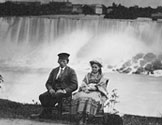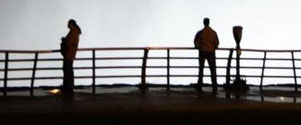

|
||||||||||||||||||||||||||||||||||||||
|
|
||||||||||||||||||||||||||||||||||||||
 |
 |
 |
 |
 The Roar of Niagara
Great speculation has always existed as to the distance that one can hear the roar of the Falls. J. Trowbridge, in his autobiography speaks of his boyhood in Lockport, and writes of the roar of the Falls. “Often in the still autumn weather, I listened to their low, hardly distinguishable roar, a sound that always breathed a quiet joy in to my soul.” That was in the 1940’s, and the distance was some eighteen miles. The sound of Niagara often appeals to writers and musicians. Eugene Thayer, in a paper entitled, “The Music of Niagara,” writes that the voice of the Falls, with its chords of harmony, are a full four octaves lower than the lowest notes on the piano keyboard. Poet Tom Moore claimed to have heard the Falls in 1804 from his home in Buffalo. He stated that seated on his veranda on Niagara Street near the ferry, in the calm of a summer eve, he heard the roar of the Falls. Nowadays, with the cacophony of machinery, cars, buses, and the din of factories, it has been a long time since the cadence of Niagara has been audible in Buffalo. Moore wished that “we would all keep still, and with the wind in the right quarter, Niagara’s roar could again be heard upon Erie’s shore.”
Douglas Farley, Director |